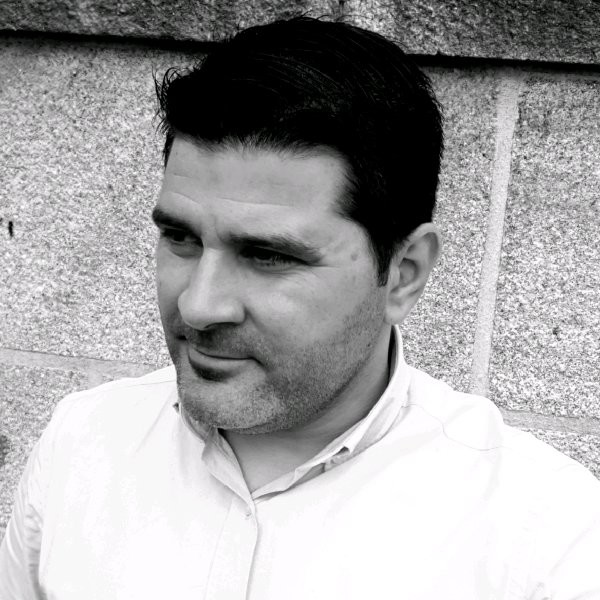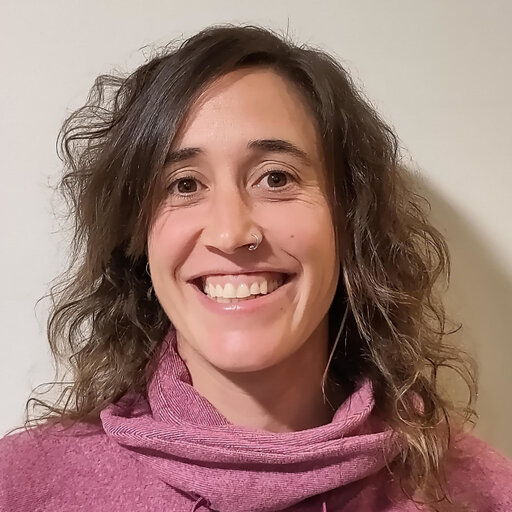A new era for dentistry

Computational biomechanics applied to dental treatments
Our groundbreaking software DentalFEM employs Artificial Intelligence (AI)
and the Finite Element Method (FEM) to provide accurate biomechanical response of implant treatments.
Our AI tool automatically generates a comprehensive 3D digital replica of the patient's oral cavity, meticulously reconstructed
from Cone Beam Computed Tomography (CBCT) imagery. After placing the implant on virtual patient's anatomy using our user-friendly
3D environment, FEM simulations provide the biomechanical response of the treatment(stress-deformation patterns on teeth, implants,
and surrounding bone and tissue) and implant survival can be evaluated.
DentalFEM operates seamlessly as a user-friendly web service, accessible from any device, operating system, or web browser.
By virtually testing surgical outcomes before proceeding with the actual procedure, clinicians gain confidence in their
treatment plans, reducing the likelihood of unnecessary surgeries or implant failures. This not only saves time and costs but
also enhances patient satisfaction and overall treatment outcomes.
Problem and solution
Dental implants do much more than replace missing teeth. They help maintain and strengthen bone structure, provide the
ability to chew food, and give patients the confidence to smile.
While dental implants are common tooth-replacement options, complications can occur.
Ensuring their clinical and aesthetic success involves a delicate balance of multiple factors, including implant
material properties, precise design considerations and patient's anatomy and bone quality.

According to American Academy of Implant Dentistry, more than 3 million people in US have already undergone one or more
dental implant surgeries in 2019. This number is growing at an annual rate of 500,000.
Traditional approaches , relying solely on clinical experience, Cone Beam CT scan exploration, 3D printing or CAD/CAM 3D tools
often fall short in delivering optimal implant biomechanical outcomes potentially reducing implant's lifespan
(mechanical failure is around 10%, and this figure is linked also with aesthetic failure, with a 33% incidence in patients
undergoing implant treatments).

Finite element method (FEM) is a numerical technique to study mechanical response of a structure computationally, widely
used in aerospace, automotive or naval industries.
Despite FEM has proved to be a useful tool in implantology, the scientific skills needed and the steeped learning curves of general-purpose
software (expensive license fees), preclude the use of this approach in daily clinical practise.

What if we could combine the power of dentistry and engineering to create a more predictable, precise,
and patient-centric implantation process, reducing failure rates in a 40% and dental office appointments
in a 35% ?
Our groundbreaking software DentalFEM employs Artificial Intelligence (AI) and the Finite Element Method
(FEM) to provide accurate biomechanical response of implant treatments.
By leveraging well-established mathematical foundations and computational techniques, we deliver
unparalleled precision and accuracy. Our software offers an immersive and visually stunning experience
(AR environment and holographic display) for detailed examination of implant placement, enabling
clinicians to explore the outcomes of different implant scenarios dynamically and interactively.
Previously inaccessible areas and challenging measurements become easily accessible. Visualize stress
distributions, analyze deformation patterns, study implant-bone interactions and make well-informed
decisions based on evidence.
In the United States alone, it is estimated that approximately 100,000 dental implants fail each year (assuming a 10% failure
rate). These failures result in a substantial cost of around $400 million annually, assuming an average implant cost of
$4,000. By increasing the budget by just 6% and implementing the use of DentalFEM, the country has the potential to save
approximately $160 million on failure treatments each year.

How it works?
DentalFEM is groundbreaking software designed for dental professionals to reduce dental implant failure rates through computational biomechanics. The workflow is as follows:

1. Registration and login on the web platform
The workflow is managed through our tailored web platform. Once you register and you are logged in,
you can create your cases. You are free to include the desired data for your patients. The only mandatory input is the uploading of a Cone Beam CT of your patient. An anonymised copy of your patient's dataset is sent to our servers.
Once uploaded, you just need to click on "Launch reconstruction" and all the proccess starts.
2. Segmentation
CBCT involves tissues, teeth, bone... among other anatomical structures. These areas need to be identified and isolated in order to model them with suitable physical properties (density,
Young modulus and Poison ratio) and obtain the regions of interest for the obtention of the patient's 3D digital replica. These process is called segmentation and usually reuqieres tedious work of an expert in oral anatomy (a single dataset segmentation can takes up to 8 hours of manual work).
Our refined Machine Learning algorithms automatically carry out this work, in a matter of minutes.
3. 3D reconstruction
Based on segmented CBCT data, an accurate 3D reconstruction of patient’s oral cavity is obtained,
containing all relevant structures for the finite element analysis. This stage involves also smoothing and decimation of the patient's anatomy. Using in-house algorithms, we reconstruct also
periodontal ligament (PDL) and we are including mandibular canal within our digital twin.
Each region is assgined with variable material properties to accurately represent the biomechanics of
the materials involved.
4. Virtual surgery
Once the virtual patient is available, we allow the user to place the implant. We have a database comprising assemblies of screws, abutments and crowns of well-known brands. Hence,
the user can assess several procdures based on different positioing of the implat, angles,implant materials, shape, lenght...The possibilities are endless!
This powerful tool allows to simulate also stages of the implant treatment (sinus augmentation, bone grafting…) computationally by directly modifying the virtual 3D geometry of
the patient and placing the new implant. and study the outcomes for the patient from a mechanical perspective. The surgeon modifies the 3D model in order to replicate the real
surgery.
5. Meshing and FEM simulation
The next step is to obtain the structural response of the implanted protheses by solving
solid mechanics equations using finite element method. The 3D model is meshed (divided in small volume cells) where equations will be solved. This will provide biomechanical values at every point
of the oral cavity geometry based on different loading conditions to understand the influence of the treatment, forecasting the outcomes before going to the chairside with the real patient.
Bone remodeling and osseointegration, together with non linear material proerties of tissue will be part of our final release, providing the most accurate oral biomechaical model developed so far.
6. Analysis of the results
Finally, the computer provides a wealth of data that includes stress and strain distributions
among others. This will aid in patient specific surgery planning (material selection, diameter/length of implant…) and guarantee the values for this procedure are within the
acceptable range to prevent implant failure

We replace real humans by virtual ones, predicting the outcome of a procedure before performing it on
real patients!

We’re - idealists and strategic thinkers.
After 5 years of intense work, we managed to create and engage an outstanding team for the development of our revolutionary product. Technical, financial and business development profiles are working together towards the common goal of changing the dental treatments' paradigm.
Our partners
In Dentaland, they cover all specialties within the oral surgical field, including advanced implantology, extraction of wisdom teeth, periodontal surgery, endodontics, and more. Dentaland specializes in correcting the positioning of teeth and jaws to address issues or alterations of aesthetic or functional nature in the face or mouth.
CHIFOR MEDDENT was founded in 2011- This dental office counts on the total 11 employees,
(3 of them lecturers with PhD), with a vast research experience in prosthodontics, endodontics, orthodontics and periodontology in
CHIFOR but also in the University of Medicine and Pharmacy “Iuliu Hatieganu” from Cluj-Napoca, Romania.
The cooperation with them has been a continuous and included not only clinical dentistry but also medical research activities.
Currently, company is looking to extend its activity from clinical dentistry towards medical R&D of new technologies for diagnosis
and treatment.
Dental Noia was founded with the objective of creating its own style of dental care, delivered by a multidisciplinary team of
specialized dentists. The foundation of this project is the care of oral health, with its essential pillars being promotion,
prevention, and early diagnosis of oral pathologies, along with involvement in overall health.
Their dental center aims to provide patients with friendly and approachable dentistry without neglecting the continuous education
of their professionals, the use of the latest technologies, and clinical excellence.
SYC DENTAL LAB, established in 2011, originated as a youthful and innovative project connected to the latest technologies in
the dental sector. Today, it is comprised of a team of qualified professionals who undertake all tasks related to the field of
Dental Prosthetics. Their dedication and effort drive them towards the GOAL of personalization in the finishing of each job.
In this way, they aim to achieve the highest possible satisfaction, both for their CLIENTS and their CLIENTS' PATIENTS.
To accomplish this, they rely on close, direct, and continuous communication between the clinic and the laboratory.







